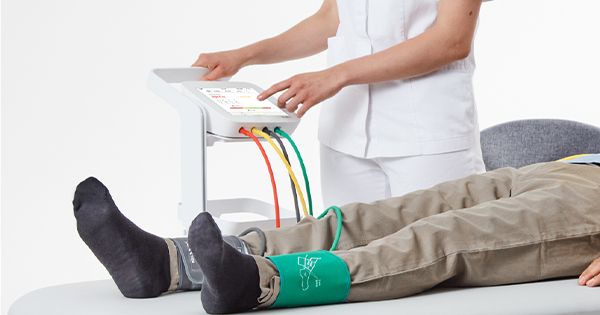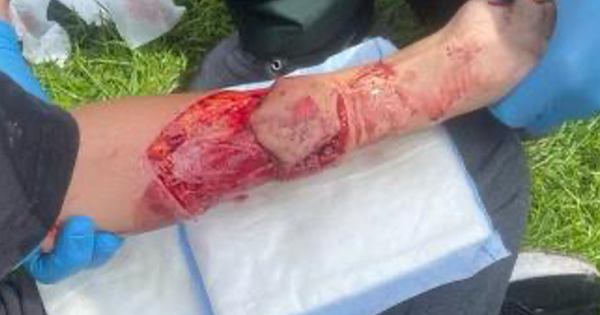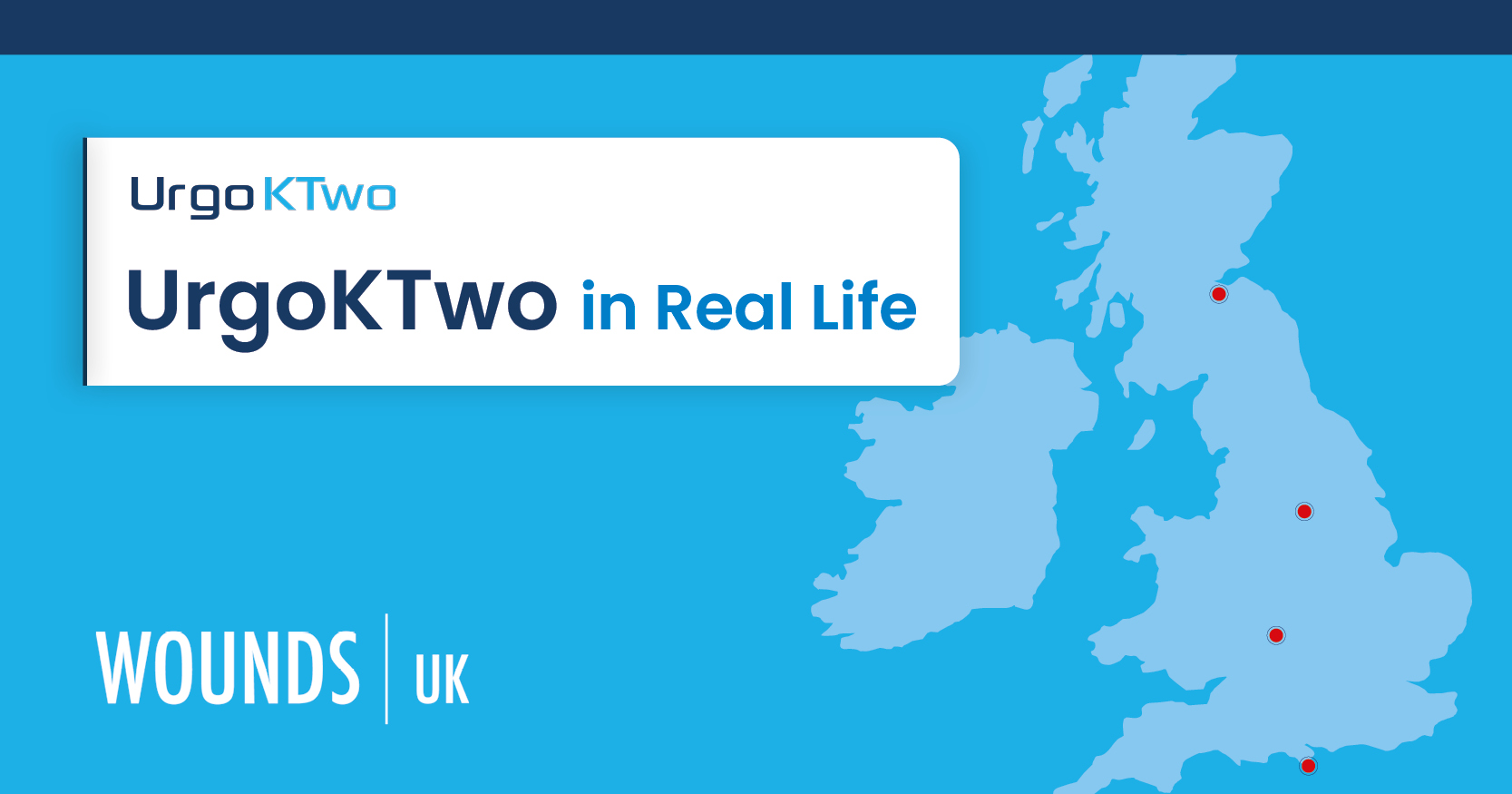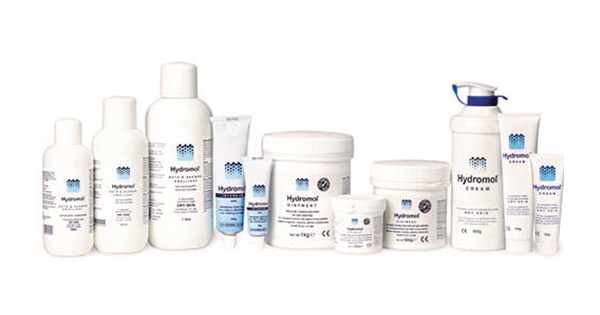This article reports on two conference presentations held at the Wounds UK annual conference in Harrogate, UK, 11–13 November 2024. The first presentation was on the Best Practice Statement (BPS): “Effectively assessing ankle brachial pressure index (ABPI) in leg ulcer patients,” presented by Leanne Atkin, and the second was on “The implementation of automated doppler for assessment of lower-limb wounds in community nursing,” presented by Nicola Wallace.
The BPS, developed by Wounds UK and supported by an unrestricted educational grant from MESI, was developed by an expert working group in January 2024 and helps guide clinicians using automated ABPI devices for patients with venous leg ulcers (Wounds UK, 2024). The aim of the BPS was to address some of the issues and challenges raised by clinicians by standardising best practice and supporting the use of automated ABPI devices within a safe framework.
A subsequent quality improvement project was undertaken by the Central London Community Healthcare Trust to improve the standards of care for patients with lower-limb wounds based on the recommendations from the BPS. Following an 18-month period, during which ABPI practice was transitioned from the use of handheld ABPIs [Figure 1] to automated ABPIs [Figure 2], the care significantly improved from only 20% of patients having an ABPI recorded to 100% of patients having an ABPI recorded, and gold standard was achieved for all patient groups.
ABPI and arterial assessment
Arterial assessment is a fundamental aspect of lower-limb ulceration assessment. The most common form of objective arterial assessment is the measurement of ABPI. ABPI is a non-invasive, simple bedside test to identify the presence or absence of peripheral arterial disease (PAD) in the leg by comparing systolic blood pressure at the ankle with that in the arm. ABPI assesses macro-arterial circulation and can detect or exclude arterial disease, helping to determine whether compression therapy is safe to use. However, it does not, as is often assumed, confirm a diagnosis of venous disease, only the suitability of compression therapy.
The BPS describes how PAD in the legs is the narrowing or blockage of vessels (arteries) carrying blood from the heart to the legs, primarily caused by a build-up of fatty plaque in the arteries (atherosclerosis; Centres for Disease Control and Prevention [CDC], 2022). PAD can, therefore, reduce blood supply to the limbs, putting the patient at risk of major limb amputation. Additionally, as atherosclerosis is a systemic disease, patients are also at risk of developing coronary or cerebral artery disease, which increases the likelihood of myocardial infarction or stroke (American Heart Association, 2024). The BPS outlines that early detection of PAD and appropriate management, including addressing modifiable risk factors and initiating appropriate medical therapy, can significantly reduce morbidity and mortality (Wounds UK, 2019).
Whilst ABPI measurement may appear a simple bedside task, measuring the blood pressure within the arteries in the arms and combining that with the blood pressure measurement in the legs is perceived by many clinicians as difficult and something which requires a degree of competence.
Reliability as a diagnostic test
The reliability of ABPI as a diagnostic test for PAD was explained in the BPS. It outlined how ABPI is a reliable test in detecting PAD (indicated by an ABPI value of 0.9 or less), with a high sensitivity (75%) and a high specificity of diagnosing PAD (86%; National Institute for Health and Care Excellence [NICE], 2024). It was described how ABPI has a high inter-dependency (with the same results when the test is undertaken by different people) and a high intra-dependency (with the same results on repeat tests on the same patient). Overall, ABPI is extremely reliable at detecting PAD (NICE, 2023).
The burden of lower-limb wounds
The burden of lower-limb ulceration is significant and increasing annually, with associated financial costs and impacts patients’ quality of life, with the number of diagnosed venous leg ulcers being 560,000 in 1.1% of adults aged 18 and older (Guest, 2020).
An ABPI assessment is an essential part of lower-limb ulceration evaluation and is commonly integrated into local policies and best practice guidelines. The National Wound Care Strategy Programme (NWCSP, 2023) recommends using ABPI to screen for PAD in people with leg ulcers as part of a comprehensive clinical assessment. However, according to Guest et al (2020) in their cohort study evaluating the burden of wounds to the UK’s NHS, only 16% of patients had an ABPI assessment documented in their records.
The lack of using diagnostic tests impacts on the quality of care, resulting in multiple unwarranted variations of lower-limb care, including poor/delayed assessment and diagnosis, underuse of evidence-based practice and overuse of ineffective interventions (e.g. compression less than 40mmHg). The burden is unnecessary and does not need to exist. The reality is that, in the UK, only 37% of patients with a venous leg ulceration achieve healing within 12 months of therapy (Gohel et al, 2018). If practice were standardised, with a clinical pathway, there can be confidence that patients are treated with evidence-based practice. Within a 2 week time frame, there would be potential for substantially improving healing rates by simply limiting unwarranted variation and delays in treatment.
For patients with venous ulceration, effective healing is not difficult to achieve. It relates to getting the fundamentals of care right, including an accurate assessment of the patient, early identification of underlying aetiology, managing the underlying venous hypertension with the use of strong compression, venous ablation and effective wound bed preparation (Gohel et al, 2018; 2020). Effective wound healing can be achieved within 21 days through early access and evidence-based practice [Figure 3]. If early access to evidence-based practice is unavailable, leg ulcers can and often do develop into a non-healing wound (Guest et al, 2020).
There is an abundance of evidence available regarding the management of patients with venous leg ulcers. Clinicians know how to achieve this; the key is that strong compression therapy is needed; however not all clinicians are trained or confident to undertake an ABPI, which is the vital safety check to ensure compression therapy is not contraindicated.
It is essential to identify opportunities for patients to move through the pathway by obtaining the ABPI in an alternative way. This could be achieved through the use of technology.
Barriers to ABPI
The audience were invited to consider barriers to undertaking a timely ABPI within the reality of routine clinical practice. Time was identified as a significant determinant: it would take a general nurse up to 30 minutes to undertake a hand-held ABPI, which is time staff do not always have. In contrast, automated ABPI machines could significantly reduce this time. The issues of capability, competence and confidence persist with manual ABPI, necessitating clinicians to constantly train and keep up to date on the procedure. With an automated machine, the training and maintaining of competency is manageable, due to the simplicity of the device, in turn increasing the capability and confidence of the clinician and removing the fear factor of incorrectly measuring the ABPI. Other factors that present barriers included a patient’s ability to lie flat, size of the limb, position of the ulcer, skin condition and past medical history. The clinician should always ensure the patient does not have significant PAD. This check is crucial because improper use of bandages or compression therapy in patients with existing severe PAD can result in severe damage to the body [Figure 4].
Automated ABPI versus handheld ABPI: The current debate
There is a debate around which method should be used for ABPI, the automated or the handheld. NICE guidelines (2023) do not state that one method is better than another but that there is simply a lack of evidence on the automated method for ABPI measurement
It is important to note that when undertaking a manual ABPI, clinicians must calculate the ABPI themselves by dividing the ankle systolic pressure by the brachial systolic pressure. However, many clinicians experience difficulties remembering the calculation process and may fear making errors, which can impact diagnostic accuracy.
In contrast, automated ABPI devices eliminate the need for manual calculations. These devices automatically perform the measurements and calculations, displaying results clearly on-screen (often using color-coded indicators such as green for normal and red for abnormal readings), thereby enabling clear decision-making for clinicians.
It’s crucial to understand that while ABPI measurements – whether manual or automated – are valuable tools, they have limitations. A key consideration is the potential for unreliable results in the presence of arterial calcification, which is common in patients with diabetes or chronic kidney disease. When ABPI readings are unusually high (typically above 1.3 or 1.4; Figure 5) they may indicate arterial wall calcification rather than normal blood flow. In such cases, further clinical investigations are necessary to accurately assess vascular health. See Figure 6 to view the medial wall of the artery calcification, visible via x-ray, which can lead to falsely elevated ABPI readings.
Training clinicians on how to interpret ABPI readings is more important than training them on how to undertake the test. The NICE guidelines (2023) do not consider automated ABPI machines ineffective, but rather highlight a lack of evidence regarding their use.
This lack of evidence is primarily due to the relatively recent introduction of these automated devices, which made the NICE review challenging. The guideline emphasises the need for more research to establish the effectiveness and reliability of automated ABPI machines compared to manual methods. See Box 1 to view the NICE statement in its entirety (NICE, 2023).
Consequently, the lack of evidence regarding automated ABPI machines makes it challenging to fully assess their effectiveness and advantages in clinical practice. Further research is needed to evaluate how these devices impact the patient’s journey through the wound care pathway. Specifically, studies should focus on the potential time savings for nursing staff, accuracy of automated ABPI measurements in patients with leg ulcers and impact on overall treatment outcomes and time to diagnosis.
PAD identification versus safety check for compression
ABPI is used for two distinct patient populations: those requiring assessment for suitability for compression therapy in the presence of lower-leg ulceration and those being evaluated to aid diagnosis of PAD. The evidence reviewed by NICE (2023) is specific to the use of ABPI in patients with lower-limb ulceration.
PAD is diagnosed when ABPI falls below 0.9 (NICE, 2024); however, strong compression therapy can still be safely used in patients with an ABPI between 0.8 and 1.3. This means that some patients with mild PAD (ABPI 0.8–0.9) may still be eligible for compression therapy.
There is a significant difference between detecting PAD and performing a safety assessment for compression therapy. However, this distinction is not clearly delineated in the NICE recommendations. NICE guideline (2023) does not suggest that ABPI machines cannot be used or that they should be stored in cupboards, but rather recommends that these devices be used within research settings to gather more robust data on their accuracy and effectiveness. It is essential for clinicians to understand the limitations of ABPI readings, whether obtained manually or through automated devices, and to ensure accurate documentation so that further evidence can be collected to assess their impact on clinical practice.
Diagnosis
When diagnosing the aetiology of a leg ulcer, the BPS outlines that diagnosis should be achieved following a detailed patient history, identifying risk factors, undertaking a physical examination and observation of ulcer presentation. ABPI is only one component of the overall assessment, serving as a tool to aid diagnosis and guide treatment.
Limitations
ABPI is not without its limitations. A holistic assessment is needed to determine which ABPI assessment method is more appropriate – a handheld ABPI machine or vice versa.
It is important to remember that ABPI is not the sole determinant in compression therapy decision-making. There are other factors to consider when determining arterial flow. If an accurate ABPI value cannot be obtained, clinicians need to consider other methods to assess the patient, ultimately aiming to balance the risk. In vascular medicine, a combination of measures can be used to determine the likelihood of significant PAD, including pulse palpation, Doppler auscultation, Doppler waveform analysis, and measurement of systolic ankle or toe pressure.
The risk of no compression therapy
Failure to perform an ABPI can also cause risk, as the lack of needed compression therapy can result in patient harm, significantly impacting quality of life (Wounds UK, 2024). There is an unmet need to reduce clinicians’ fear regarding compression therapy (Hopkins, 2023; Wounds UK, 2024). Currently, clinicians across Europe are using up to 40mmHg of compression in patients with an ABPI of 0.5–0.8 (Mosti et al, 2012). If no red flags, all patients can be started on mild graduated compression before ABPI testing.
It is essential to establish a way to employ ABPI assessment effectively, based on the service and staff availability, ensuring patients follow an evidence based wound care pathway as soon as possible. The audience were invited to consider how they can ‘unlock the door to strong compression’ and enable improved wound healing outcomes within their practices.
Tackling substandard care through the use of automated ABPI
The second presentation by Nicola Wallace, described a quality improvement project, undertaken in the locality of West Hertfordshire to assess the impact of automated dopplers in carrying out ABPI assessments. In a review of the community nursing caseloads in 2023, a 70% district nurse staffing deficit was observed. Since the coronavirus disease-19 (COVID-19) pandemic, staff were struggling to cover excessive caseloads. This increased burden was also caused by an increase in the number of patients with diabetes requiring insulin injections, palliative care and patients with pressure ulcers. Increase in staff burn out and sickness levels were noted. Consequently, the resultant time-constraints inhibited the use of hand-held Doppler machines for ABPI measurement. This resulted in patients not receiving gold standard treatment or even following the clinical care pathways, significantly impacting quality of life outcomes.
Table 1 highlights the caseload review outcomes: of all patients, only 8% and 10% received full and reduced compression, respectively; 92% of patients received no compression at all. This substandard care highlights the significant unmet need to
improve diagnosis and care efficiency in this clinical setting.
Plans to improve care based on the Best Practice Statement
Based on the BPS recommendations (Wounds UK, 2024), a decision was taken to ‘unlock the ABPI’ by employing automated ABPI. This proposal was met with significant resistance from staff who raised concerns surrounding the de-skilling of staff. Nurses had a fear of ‘letting go’ of a skill that they had been trained to do. Further concerns were raised regarding the accuracy of the machines and uncertainties regarding the NICE guidelines (2023).
However, due to the consistently increasing burden on the service, proposals were drawn up to transition to automated ABPIs across the locality. This included redesigning leg ulcer training (Wounds UK, 2024) to train clinicians to use automated ABPI machines in combination with lower-limb assessment. All community nurses attending to patients with lower-limb wounds were required to carry out ABPIs with an automated machine, and two machines were purchased for each team. The aim for all the trained clinicians was to effectively undertake a lower-limb assessment, perform an automated ABPI assessment, diagnose, plan, and initiate the correct and timely treatment.
Project outcomes
Following implementation, a second review of the patient group was undertaken 18 months later. This review revealed significant improvements in patient care [Table 1]. All patients (100%) received an ABPI assessment; 85% received a lower-limb diagnosis; 85% received a lower-limb assessment; 23% received reduced compression; 61% received full compression. The number of visits was reduced from 60 to 28 per week. Gold standard of care was achieved for all patients due to the efficiency of unlocking the ABPI. All clinicians expressed confidence and satisfaction with the improved outcomes achieved for their patients and felt educated and empowered to improve patients’ lives.
Notably, one patient with multiple sclerosis and a malodorous, wet wound had experienced a loss of friends, marriage, sex life, and hobbies; this patient had waited 4 months for an ABPI assessment at the time of presentation. After an automated ABPI assessment was undertaken for this patient, compression therapy was initiated, and wound healing was achieved. This example highlights how automated ABPI assessment can be significantly efficient and improve healing outcomes for patients living with wounds.
Summary
The BPS serves to guide clinicians on the use of automated ABPI devices for patients with venous leg ulcers and supports the use of automated ABPI devices within a safe framework. NICE (2023) calls for more evidence on the effectiveness of the automated ABPI devices. Clinicians are encouraged to share potential ideas of research projects to evaluate the use of automated ABPI devices within their areas of practice to develop upon existing evidence. The quality improvement project undertaken within the community setting of West Hertfordshire provides robust evidence on how care for patients with lower-limb wounds can be made more efficient by employing automated ABPI, enabling the achievement of gold standard for all patients. The automated ABPI measurement empowers clinicians to make informed decisions, ensuring excellent standards of care for their patients.







